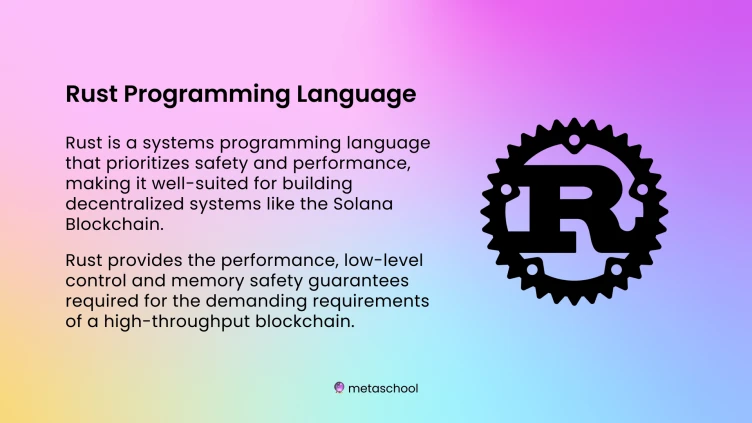Decoding the Future of Blockchain: A Comprehensive Comparison of Pandora, Near, Rockchain, Solana, and Braid

This website uses cookies
We use Cookies to ensure better performance, recognize your repeat visits and preferences, as well as to measure the effectiveness of campaigns and analyze traffic. For these reasons, we may share your site usage data with our analytics partners. Please, view our Cookie Policy to learn more about Cookies. By clicking «Allow all cookies», you consent to the use of ALL Cookies unless you disable them at any time.
The blockchain landscape is evolving at a breakneck pace. With numerous platforms emerging, each promises to offer unique features and solutions to the challenges faced by predecessors. A significant catalyst in this evolution is the Rust programming language, known for its safety, concurrency, and performance capabilities. This article delves deep into five platforms—Pandora, Near, Rockchain, Solana, and Braid—that leverage Rust to redefine blockchain's boundaries.
Rust, a systems programming language, has become a favorite among blockchain developers. Its memory safety features, without a garbage collector, ensure efficient runtime performance—making it an ideal choice for blockchain platforms that require high-speed transaction processing. Moreover, Rust's "fearless concurrency" allows for enhanced scalability, a critical need in the blockchain domain.
Overview: Pandora, built on Rust's robust foundation, positions itself as a distributed platform focused on issuing, verifying, and recovering digital data.
Rust's Influence: The language's inherent security and performance capabilities amplify Pandora's promise of a secure and efficient digital data platform.
Challenges and Solutions: A look at the hurdles faced by Pandora and its innovative solutions, enhanced by Rust's capabilities.
Overview: Near, leveraging Rust's power, emphasizes bridging distances in the decentralized world.
Technical Prowess: Dive into the technologies that power Near, with Rust playing a pivotal role in its core architecture.
Ecosystem: A snapshot of the vibrant community and projects blossoming under Near, many of which are Rust-centric.
Overview: Rockchain offers a Rust-backed approach to blockchain, ensuring data integrity and security.
Core Features: Rust's features, such as pattern matching and type inference, play a crucial role in making Rockchain a formidable player in the blockchain arena.
Future Roadmap: Insights into what the future holds for Rockchain, with Rust continuing to be a central pillar.
Overview: Solana, built with Rust, stands out with its impressive transaction speeds and scalability solutions.
Performance Metrics: A deep dive into how Rust's efficiency complements Solana's technical metrics to achieve unparalleled speeds.
Economic Model: Understand the intricacies of Solana's tokenomics, with Rust ensuring a seamless and secure economic infrastructure.
Overview: Braid, harnessing Rust's next-generation verifiable re-encryption mixnet, is weaving a new narrative in the blockchain world.
Technical Innovations: Explore how Rust's features, like its rich type system and ownership model, contribute to Braid's unique approach to blockchain.
Community Engagement: A look at the driving force behind Braid's success and its vibrant community, many of whom are Rust enthusiasts.
Blockchain technology, especially platforms built with Rust, is poised to revolutionize numerous industries. As we decode their offerings, strengths, and challenges, it becomes evident that the future of blockchain is not just promising but also incredibly exciting, with Rust playing a central role in its evolution.
